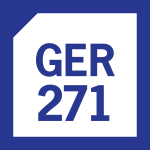
Description
This course introduces students to German culture. But instead of following the standard practice of cultural history – starting with the stone age and making our way step by step to the modern era – GER 271 instead looks at culture by considering its objects, the material things that can signify meaning within a national culture. We’ll bounce around the historical timeline a little bit in order to deal with a variety of ideas and issues.
What makes this course different?
Well, a number of things:
- first of all, the cultural objects: think of them as starting points for discussions about major issues and ideas in the society and culture of German-speaking Europe
- an emphasis on human engagement: online courses are sometimes thought of as the lesser cousins of in-class (face-to-face) courses because both students and instructors are more passive, less present and active in the course. Not here; the online discussion forums aren’t just add-ons but an integral part of the course – you do a lot of your studying and learning by participating regularly and consistently in the forums. And the instructor will be right there with you.
- the human engagement leads to learning engagement: this is not the kind of course where you memorize facts and spit them back on tests and exams, only to forget them as soon as you leave the exam. Instead, you become familiar with the material by discussing and writing about it.
- this course is all about communication. The ability to communicate clearly and effectively is a life and career skill that everyone needs. We’ll be improving our communication skills while at the same time using them to learn, because basically to engage with knowledge means communicating about ideas with others.
Actually, come to think of it, that last sentence sums up my whole approach to studying at university, especially in the humanities: engaging with knowledge is all about communicating ideas.Communication is a two-way street, by the way; the whole point behind researching and writing about a topic is to engage others in a discussion about that topic. It’s that simple.
Course structure
The course is divided into three thematic clusters, each of which has three modules – week-long units in which we work on a particular object and its related ideas. Each module has a number of items – readings, interviews, videos (including some ProfMoments, short lectures by the instructor) – that discuss the object and related ideas and issues. Each item has its own discussion forum where you can answer questions set by the instructor or raise questions and ideas of your own. At the end of each cluster is a Cluster Review, an open-book assignment that poses questions about that cluster’s modules and ideas.
In addition to the nine modules that make up the main part of the course, there are two other modules. Module 0 takes place the first week and provides an introduction to the course. Module 10 is a three-stage project; the goal is to create a module on an object of your own choosing.
Objectives
Here’s what you will learn
| To learn this . . . | . . . you will do this: |
| what material culture is and how objects contribute to it | Module 0 – the introductory module that explains some of these concepts |
| what issues and ideas are significant for understanding the cultural development of German-speaking Europe | the readings and viewings contained in the modules |
| how to use cultural objects as gateways to analyzing cultural developments | the three Cluster ReviewsModule 10 |
| the ability to analyze and comment on ideas connected with national culture | the learning tasks associated with the nine modules (especially by contributing to the discussions associated with items in the module) |
Modules
[catlist id=4 child_categories=false]
